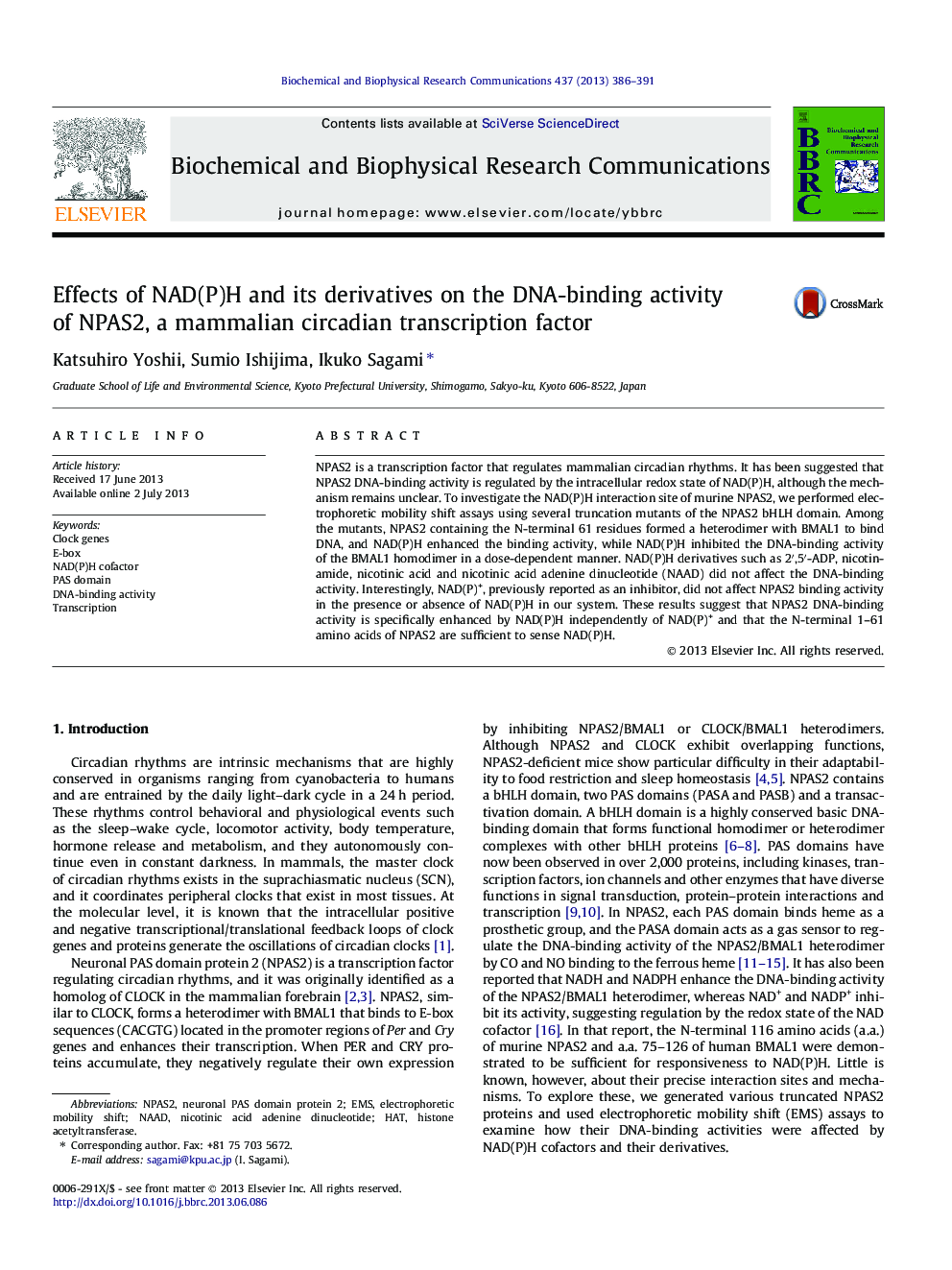| کد مقاله | کد نشریه | سال انتشار | مقاله انگلیسی | نسخه تمام متن |
|---|---|---|---|---|
| 10758897 | 1050414 | 2013 | 6 صفحه PDF | دانلود رایگان |
عنوان انگلیسی مقاله ISI
Effects of NAD(P)H and its derivatives on the DNA-binding activity of NPAS2, a mammalian circadian transcription factor
دانلود مقاله + سفارش ترجمه
دانلود مقاله ISI انگلیسی
رایگان برای ایرانیان
کلمات کلیدی
EMSNaADNpas2neuronal PAS domain protein 2Electrophoretic Mobility Shift - تغییر حرکت الکترو فوریتیE-box - جعبه EPAS domain - دامنه PASTranscription - رونویسیDNA-binding activity - فعالیت مرتبط با DNAnicotinic acid adenine dinucleotide - نیکوتین اسید آدنین دینکلوتیدHistone acetyltransferase - هیستون استیل ترانسفرازClock genes - ژنهای ساعتHAT - کلاه
موضوعات مرتبط
علوم زیستی و بیوفناوری
بیوشیمی، ژنتیک و زیست شناسی مولکولی
زیست شیمی
پیش نمایش صفحه اول مقاله

چکیده انگلیسی
NPAS2 is a transcription factor that regulates mammalian circadian rhythms. It has been suggested that NPAS2 DNA-binding activity is regulated by the intracellular redox state of NAD(P)H, although the mechanism remains unclear. To investigate the NAD(P)H interaction site of murine NPAS2, we performed electrophoretic mobility shift assays using several truncation mutants of the NPAS2 bHLH domain. Among the mutants, NPAS2 containing the N-terminal 61 residues formed a heterodimer with BMAL1 to bind DNA, and NAD(P)H enhanced the binding activity, while NAD(P)H inhibited the DNA-binding activity of the BMAL1 homodimer in a dose-dependent manner. NAD(P)H derivatives such as 2â²,5â²-ADP, nicotinamide, nicotinic acid and nicotinic acid adenine dinucleotide (NAAD) did not affect the DNA-binding activity. Interestingly, NAD(P)+, previously reported as an inhibitor, did not affect NPAS2 binding activity in the presence or absence of NAD(P)H in our system. These results suggest that NPAS2 DNA-binding activity is specifically enhanced by NAD(P)H independently of NAD(P)+ and that the N-terminal 1-61 amino acids of NPAS2 are sufficient to sense NAD(P)H.
ناشر
Database: Elsevier - ScienceDirect (ساینس دایرکت)
Journal: Biochemical and Biophysical Research Communications - Volume 437, Issue 3, 2 August 2013, Pages 386-391
Journal: Biochemical and Biophysical Research Communications - Volume 437, Issue 3, 2 August 2013, Pages 386-391
نویسندگان
Katsuhiro Yoshii, Sumio Ishijima, Ikuko Sagami,